Dzo Zongo East Mission accomplished
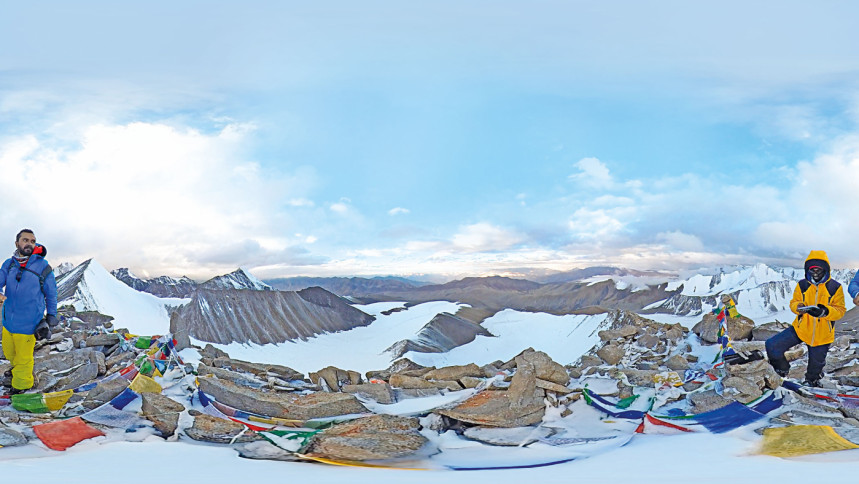
Why do you climb? Why do you risk everything over scaling a summit?
For the last decade, I have been continuously bombarded with such questions. At first, I tried to answer just like legendary mountaineer George Mallory did in 1923: "Because it's there". However, I have learnt the hard way that my answers won't satisfy everyone. Now I don't bother anymore.
It is okay if no one understands you. Well, maybe I am not being honest with myself. These questions, sometimes, come to my mind too. Facing hard choices on the high mountains, doubt does creep in.
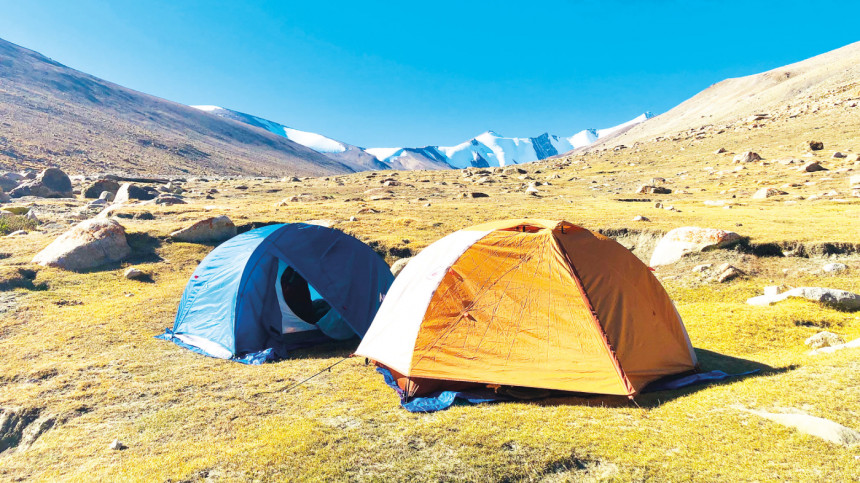
19 September 2022, was one such day.
Practising alpinism in the Himalayas is one of the most liberating experiences one can have. There's no one to help, no one to guide you. Your destiny lies within your hand. You make a mistake and you're gone.
We were in the Markha Valley of the Western Himalayas located in Hemis national park of Ladakh, a mostly high-altitude frozen desert nestled between the Himalayas and Karakoram. We chose this part of the Himalayas for our expedition, not only for its high-altitude giants but also for its spectacular landscape. The deep-rooted Tibetan culture of the region was a bonus.
We, my partner Imran Khan Ozil and I, were there to climb four high-altitude peaks -- Kang Yatse II (6254m), Dzo Zongo East (6214m), Regioni Mallai Ri- I (6120m) and Conga Ri (5755m) -- in just ten days as part of the GoZayaan Expedition Ladakh expedition.
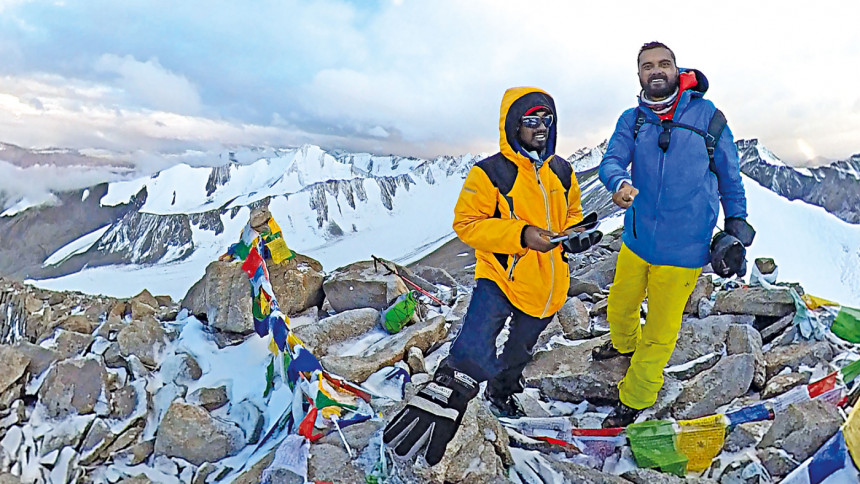
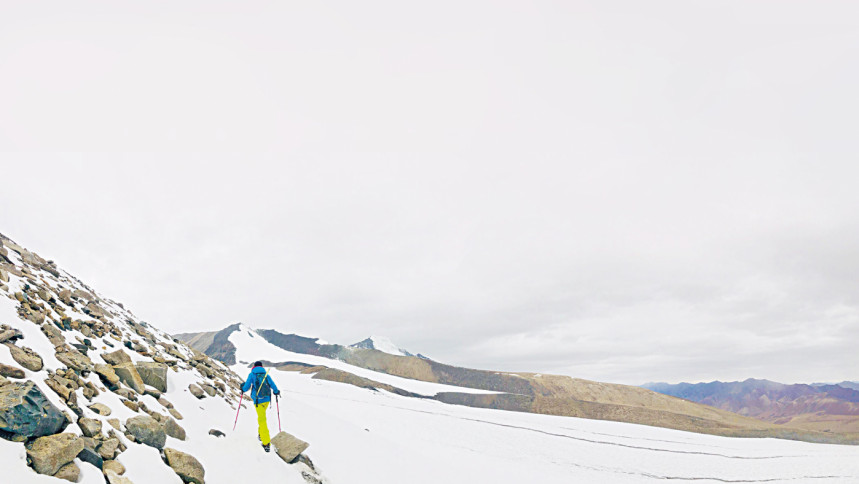
We departed Dhaka on September 4 and arrived in Leh, the capital of Ladakh, the following day. After obtaining the required permits and logistics, we started the trek towards Markha Valley on September 8 and two days later reached our first base camp, located at an altitude of about 5100 meters above sea level.
After summiting Kang Yatse II (6254m) and Regioni Mallai Ri- I (6120m) respectively on September 12 and 15, our next goal was to scale the 6214m-high Dzo Zongo East.
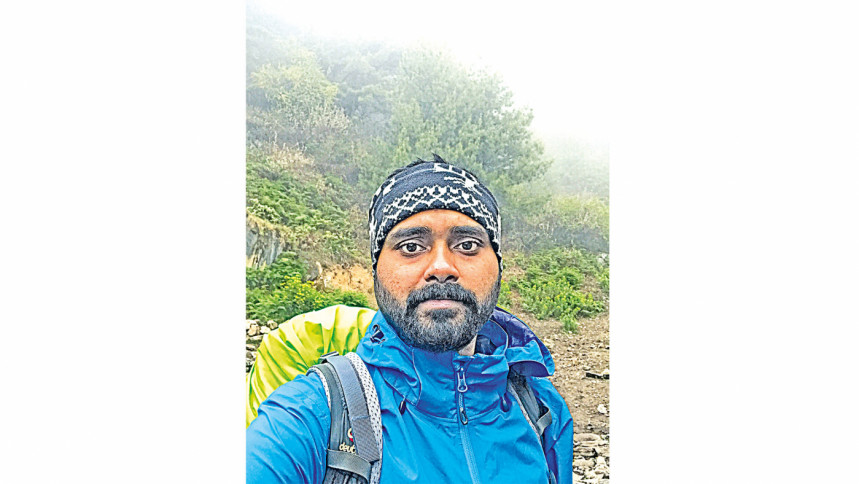
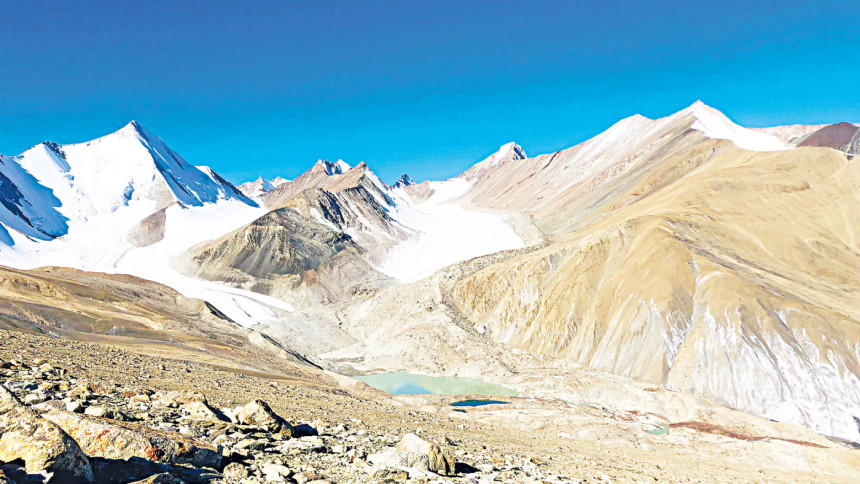
Should we attempt to climb Dzo Zongo again? There were other issues at hand too. If we attempted, could we return to Leh in time to catch our return flight back home? And most importantly, did we have enough energy left in us for another attempt at a six-thousander?
On 18 September 2022, we were able to establish our third basecamp, all thanks to our superhuman porters Ajay and Aman, a duo from Kishtwar Kashmir. We started our summit push just after midnight. If successful, it would be our third six thousander within a week. As you can assume, we were pumped. We hiked up to 5500 meters in mere three hours.
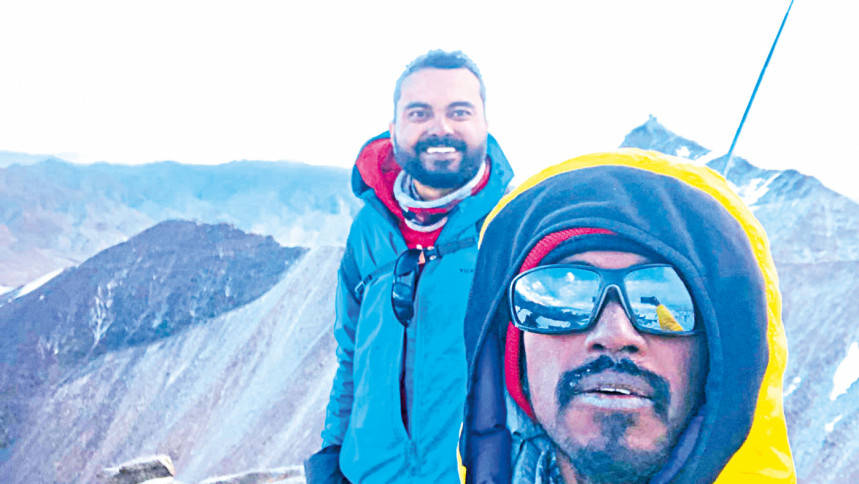
Out of the blue, Ozil announced that he couldn't feel his toes. I immediately decided to go down. The mountains are a demanding, cold place, and they don't allow for mistakes. Ozil was hesitant at first but followed me. We were leaving behind a golden opportunity to climb three six thousanders in a row! Our hearts sank as we knew how close we were to completing a unique feat. We knew that our expedition was over.
When we were back at the bank of Nimaling Chu River, the sun was already up. The ethereal sunrise of the Himalayas failed to lift our spirits. Ozil was restless the whole time. He couldn't quite accept the decision to abort the climb midway.
After resting for a while, he was constantly insisting that he was feeling better. He also put on an extra layer of socks in the meantime.
Suddenly he offered, "as we couldn't climb Dzo Zongo let's try Konga Ri (5755m)".
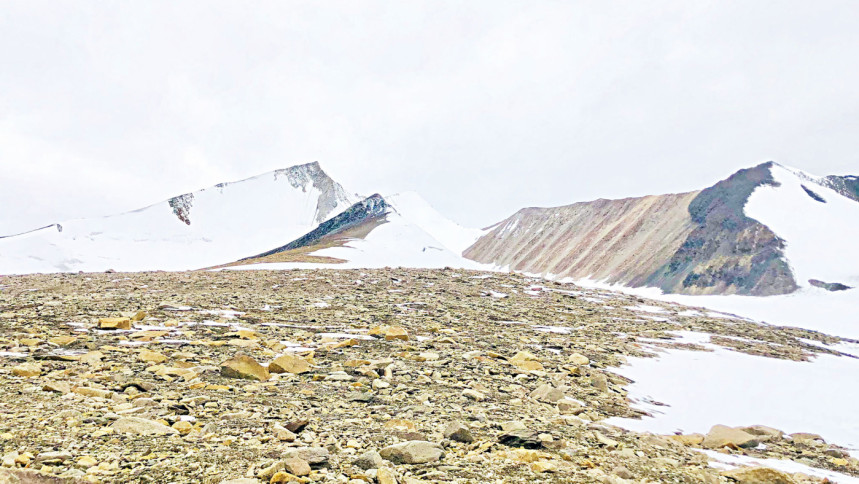
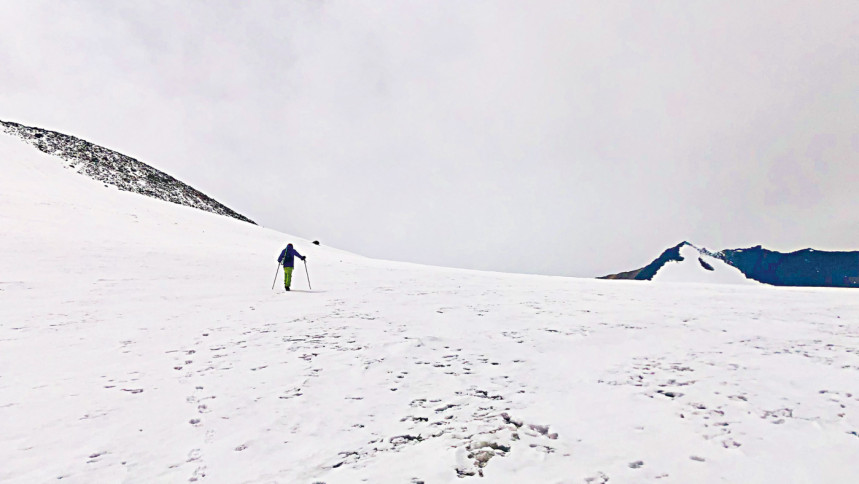
And guess what, we crossed the river and started climbing again. Ozil summited Konga Ri at around noon while I took a nap just below the summit point. And when we got back to the base camp, the clock had yet to hit 3:00pm. We had our dinner with Dal Bhaat and put our exhausted bodies into the warmth of sleeping bags.
After sunset, Ozil's restlessness infected me. Should we attempt to climb Dzo Zongo again? Ozil's toe seemed okay and he was feeling a lot better. But there were other issues at hand too. If we attempted, could we return to Leh in time to catch our return flight back home? And most importantly, did we have enough energy left in us for another attempt at a six-thousander?
Ozil was adamant to give it another try. But I was sceptical. The weather forecast wasn't promising, and we had a flight to catch. If we attempted, it had to run smoothly.
Then a crazy idea popped up: what if we start our summit bid after sunrise, thus we could avoid the cold at night and move fast in the daylight? It was an insane idea. No one starts the summit bid of a Himalayan six-thousander this late. Under sunlight, melting glacial ice and loose rocks most likely would make the route more difficult and riskier. Too many questions and we didn't have any answers.
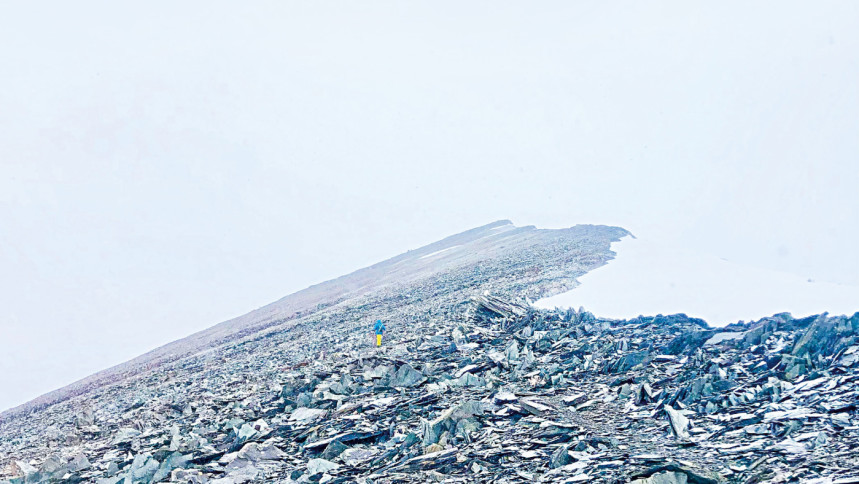
We climb mountains for various reasons. But personally, it's the sense of freedom that I find in alpinism that drives me most. Practising alpinism in the Himalayas is one of the most liberating experiences one can have. You carry all those things you need to survive in those harsh conditions in a backpack. There's no one to help, no one to guide you. Your destiny lies within your hand. You make a mistake and you're gone. There's none to blame, none to thank but you!
The expedition's fate was hanging by a thread and I made up my mind.
At around 10:00pm, I told Ozil that we would make another attempt on Dzo Zongo, and this time we would start after sunrise. And surprisingly, that night I had the best sleep of the entire expedition.
At 6:00am, we had some coffee and started again for Dzo Zongo east, the 6214-meter giant. Without any tiredness or trouble, we reached the glacier snout. And to our utter disbelief, we found ourselves at the wrong glacier.
First, I felt anger. How could we make such a mistake? The route was well-defined and it was hard to miss! Then, I was sad. Another attempt to go in vain! We sat there for around half an hour to calm our nerves down. Should we retreat?
We were so close to our goal! The choice was easy. I told Ozil that if we move fast, we can make the summit before sunset. Ozil didn't need any pursuing. So we hit the trail towards the top, once again.
It was not easy. Now there were two glaciers that we had to cross. The first glacier was short and the gradient was relatively easy. We put our crampons on and traversed the glacier to reach the eastern flank. Then we descended to the second glacier. This one was huge and full of crevasses. Ozil hesitated for a while but followed me eventually. After an arduous climb, I was able to reach the ridge and soon started for the summit. That ridge was very peculiar. Defying the high wind, there were giant blocks of rock along the whole ridge, making the summit a little more challenging.
At around 4:30pm, we were on the top of Dzo Zongo East. Our five-year-long dream finally came true.
As with all the Himalayan peaks, the view from the top was stunning. However, we had to move fast as the weather was showing signs of trouble. We started to descend without wasting time.
But it worsened sooner than we anticipated. It started snowing heavily and within minutes, it was a complete whiteout. As our visibility reduced to mere 10 feet, we lit our head torches and followed one another. At the mid ridge, my GPS watch stopped working. That forced us to use all the skills we mastered from previous Himalayan experiences to reach our tents at around midnight.
With all the misfortunes and troubles, we could climb three six thousander Himalayan peaks in a single expedition. And that is satisfying!


 For all latest news, follow The Daily Star's Google News channel.
For all latest news, follow The Daily Star's Google News channel. 


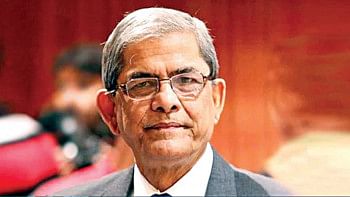
Comments